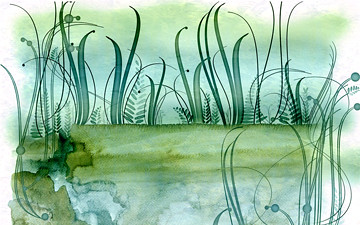A pond is a body of standing water, either natural or man-made, that is usually smaller than a lake. A wide variety of man-made bodies of water are classified as ponds, including water gardens designed for aesthetic ornamentation, fish ponds designed for commercial fish breeding, and solar ponds designed to store thermal energy.
Ponds and lakes are distinguished from streams via current speed. While currents in streams are easily observed, ponds and lakes possess thermally driven microcurrents and moderate wind driven currents. These features distinguish a pond from many other aquatic terrain features, such as stream pools and tide pools.
The technical distinction between a pond and a lake has not been universally standardized. Limnologists and freshwater biologists have proposed formal definitions for pond, in part to include ‘bodies of water where light penetrates to the bottom of the waterbody,’ ‘bodies of water shallow enough for rooted water plants to grow throughout,’ and ‘bodies of water which lack wave action on the shoreline.’ Each of these definitions have met with resistance or disapproval, as the defining characteristics are each difficult to measure or verify. Accordingly, some organizations and researchers have settled on technical definitions of pond and lake which rely on size alone.[1]
Even among organizations and researchers who distinguish lakes from ponds by size alone, there is no universally recognised standard for the maximum size of a pond. The international Ramsar wetland convention sets the upper limit for pond size as 8 hectares (19.768 acres),[2]but biologists have not universally adopted this convention. Researchers for the British charity Pond Conservation have defined a pond to be ‘a man-made or natural waterbody which is between 1 m2 and 20,000 m2 in area (~2 ha or ~5 acres), which holds water for four months of the year or more.’[3] Other European biologists have set the upper size limit at 5 ha (12.355 acres).[4] In North America, even larger bodies of water have been called ponds; for example, Walden Pond in Concord, Massachusetts measures 61 acres (~25 ha).
Some ponds have no surface outflow draining off water and ponds are often spring-fed. Hence, because of the closed environment of ponds, such small bodies of water normally develop self contained ecosystems.
(From Wikipedia, July 9th, 2010)


